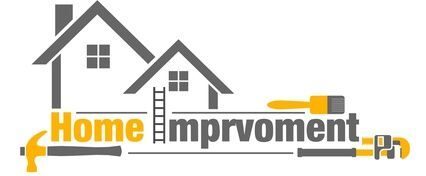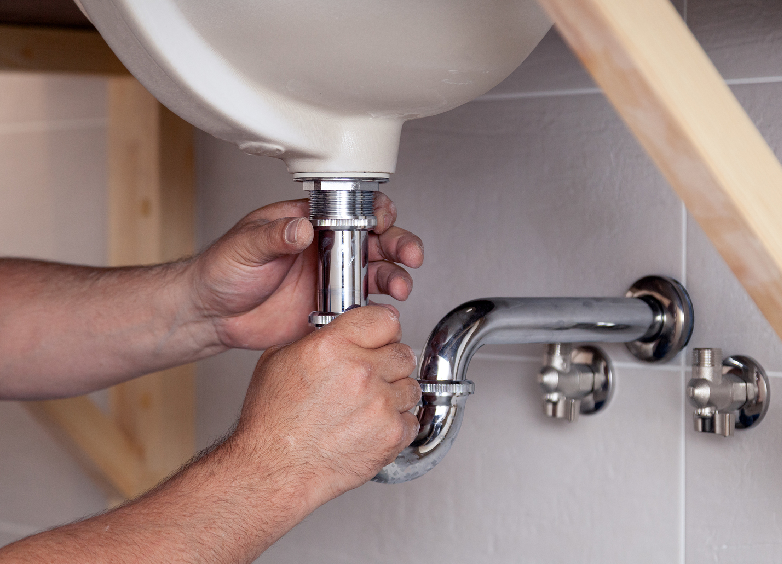In every plumbing system, water pressure plays a crucial role in ensuring proper functionality. Understanding the science behind water pressure is essential for homeowners and plumbers alike. In this blog post, we will explore the basics of water pressure, the role of pipes and fixtures, factors affecting water pressure, measuring water pressure, common problems and their effects, as well as best practices for maintaining optimal water pressure in your plumbing system.
The Basics of Water Pressure
Water pressure refers to the force exerted by water as it flows through pipes and fixtures. It is typically measured in pounds per square inch (psi) or bars. Water pressure is crucial for the efficient operation of plumbing fixtures such as faucets, showers, and toilets. Without sufficient pressure, water may trickle out or fail to reach the desired areas.
The pressure in your plumbing system depends on various factors, including the elevation of your property, the water source, and the configuration of your plumbing pipes. Understanding these factors can help you identify and address any problems with water pressure.
The Role of Pipes and Fixtures
Types of Pipes Used in Plumbing Systems
Plumbing systems can vary in terms of the types of pipes used. Common materials include copper, PVC (polyvinyl chloride), PEX (cross-linked polyethylene), and galvanized steel. Each type of pipe has its advantages and disadvantages in terms of durability, cost, and impact on water pressure.
Copper pipes are known for their long-lasting durability and resistance to corrosion. PVC pipes are affordable and easy to install, but they may have limitations in terms of water pressure capacity. PEX pipes are flexible and resistant to freezing, making them suitable for cold climates. Galvanized steel pipes, while durable, may develop rust and reduce water pressure over time.
Importance of Proper Pipe Installation
The way pipes are installed in a plumbing system can greatly impact water pressure. Proper installation is crucial to ensure optimal flow and pressure throughout the system. Pipes should be correctly sized and positioned to minimize restrictions and pressure drops. Insufficient pipe diameter or improper alignment can lead to reduced water pressure in certain areas of your home.
Additionally, avoiding excessive use of fittings and connections can help maintain water pressure. Excessive fittings, bends, and junctions create friction and turbulence that can impede water flow and decrease pressure. Therefore, it is essential to hire a professional plumber who can install pipes correctly and maintain optimal water pressure.
How Fixtures Impact Water Pressure
Fixtures, such as faucets, showerheads, and toilets, also play a significant role in determining water pressure. These fixtures often come with flow restrictors or aerators, which regulate the amount of water that flows through them. While these devices help conserve water, they can also reduce water pressure if not properly maintained.
Over time, minerals and debris can accumulate in fixtures, leading to blockages and decreased water flow. Regular cleaning and maintenance of fixtures are important to ensure they continue to operate efficiently and maintain adequate water pressure. Additionally, upgrading to low-flow fixtures that are specifically designed to maintain water pressure while conserving water can be a beneficial long-term solution.
Common Plumbing Issues Related to Pipes and Fixtures
Various plumbing issues can arise that impact water pressure in a plumbing system. Some common problems include:
- Leaking pipes: Leaks in pipes can reduce water pressure and waste water.
- Blockages: Accumulated debris or mineral deposits can clog pipes, causing reduced pressure.
- Corroded pipes: Galvanized steel pipes can corrode over time, leading to reduced water flow and pressure.
- Faulty fixtures: Damaged or worn-out fixtures can hinder water flow and decrease pressure.
Identifying and addressing these issues promptly is important to maintain optimal water pressure and prevent further damage to the plumbing system.
Best Practices for Maintaining Pipes and Fixtures
To ensure optimal water pressure and functionality of your plumbing system, consider the following best practices:
- Regularly inspect pipes for leaks and address them promptly.
- Clear any blockages or debris in pipes and fixtures.
- Monitor water quality to prevent mineral buildup.
- Upgrade to low-flow fixtures to conserve water without sacrificing pressure.
- Seek professional assistance for pipe installations and repairs.
By following these practices, you can maintain a properly functioning plumbing system with optimal water pressure.
Factors Affecting Water Pressure
1. Diameter and Length of Pipes
The diameter and length of pipes in a plumbing system directly affect water pressure. Larger diameter pipes can accommodate more water flow and maintain higher pressure. On the other hand, smaller diameter pipes can restrict flow and decrease pressure. Longer pipes also contribute to pressure drops, especially if they have an insufficient diameter or numerous fittings.
When designing or evaluating a plumbing system, it is important to consider the appropriate pipe diameter and length to ensure optimal water pressure throughout the system.
2. Flow Rate and Water Demand
The flow rate of water and the overall water demand in a plumbing system have a significant impact on water pressure. If multiple fixtures or appliances are drawing water simultaneously, the demand may exceed the supply, resulting in decreased pressure.
Understanding the flow rate of different fixtures and appliances can help you manage water demand and prevent pressure drops. Additionally, installing water pressure boosting systems or storage tanks can ensure a consistent supply of water and maintain adequate pressure.
3. Plumbing System Design
The design of a plumbing system, including the layout and configuration of pipes, plays a crucial role in maintaining water pressure. Properly designed systems minimize pressure drops and ensure efficient water distribution throughout the building.
When designing or modifying a plumbing system, it is important to consider factors such as pipe size, fixture locations, and the number of bends and fittings. Working with a professional plumber or engineer can help ensure an optimal design that maintains adequate water pressure.
4. Water Source and Supply Line
The source of your water and the condition of the supply line can affect water pressure. If your property is located at a higher elevation, you may experience lower water pressure due to gravity. Additionally, the size and condition of the supply line from the water source to your property can impact pressure.
In some cases, installing a pressure booster pump or a water storage tank can help increase water pressure in areas with low pressure due to elevation or supply line limitations.
5. Water Pressure Regulators
Water pressure regulators are devices installed in plumbing systems to control and maintain consistent water pressure. These devices are typically located near the main water supply line or at individual fixtures.
If water pressure is excessively high, a regulator can reduce it to a safe and manageable level. Similarly, if water pressure is too low, a regulator can increase it to ensure proper functionality of fixtures.
Regular maintenance and calibration of water pressure regulators are important to ensure accurate and consistent pressure control in your plumbing system.
Measuring Water Pressure
Measuring water pressure is essential for diagnosing and addressing any problems in a plumbing system. A pressure gauge can be attached to a faucet or a hose bib to measure the water pressure. The gauge typically displays the pressure in psi or bars.
It is recommended to measure water pressure at different locations in your plumbing system to identify any variations or issues. If the pressure is consistently low or high across multiple locations, further investigations or adjustments may be necessary.
Understanding Water Pressure Problems
Low Water Pressure
Low water pressure can be caused by various factors, including clogged pipes, leaks, sediment buildup, or undersized pipes. Identifying the underlying cause is crucial for determining the appropriate solution.
If you experience low water pressure in specific fixtures, cleaning or replacing the aerators or showerheads can often resolve the issue. For more widespread pressure problems, consulting a plumber to assess the system and recommend appropriate solutions is advisable.
High Water Pressure
High water pressure can lead to issues such as leaks, bursts, and damage to fixtures and appliances. It is important to identify and address high water pressure promptly to prevent these problems.
If you suspect high water pressure in your plumbing system, installing a pressure reducing valve (PRV) can help regulate the pressure to a safe level. Regular monitoring and maintenance of the PRV are necessary to ensure it continues to function effectively.
Effects of Water Pressure on Plumbing System
Water pressure can have both positive and negative effects on a plumbing system. Adequate water pressure ensures proper operation of fixtures, efficient water flow, and a satisfying user experience. However, excessive pressure can lead to leaks, bursts, and premature wear and tear of pipes and fixtures.
Understanding and maintaining appropriate water pressure are crucial for avoiding costly repairs and ensuring the longevity of your plumbing system.
Maintaining Optimal Water Pressure
To maintain optimal water pressure in your plumbing system, consider the following practices:
- Regularly monitor water pressure using a pressure gauge.
- Address any plumbing issues promptly, such as leaks, blockages, or faulty fixtures.
- Keep pipes and fixtures clean and free from debris.
- Consider installing water pressure regulators or pressure reducing valves as needed.
- Consult a professional plumber for regular maintenance and inspections.
By implementing these practices, you can ensure that your plumbing system operates smoothly with consistent and adequate water pressure.
Publisher Details:
Plumbing Squad
2412 Gundry Ave, Signal Hill, CA 90755, United States
(866) 324-9553
plumbingsquad.com
[email protected]
Understanding water pressure in your plumbing system is vital for efficient functionality. Factors like pipe types, fixtures, and proper installation impact pressure. To maintain optimal water pressure, monitor regularly, address issues promptly, and consider professional inspections for lasting performance. Contact an expert plumber in Norwalk, CA for lasting solutions.
Read this insightful blog on Does Your Home Have Water Pressure Issues?

